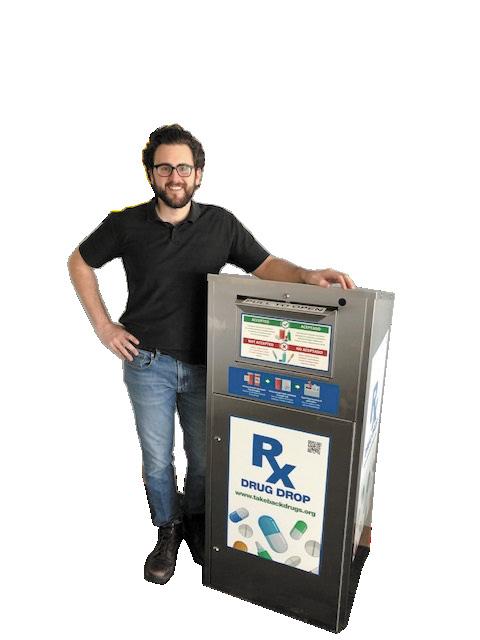
2 minute read
'It Benefits Everybody'
by A nne Stokes
According to the Centers for Disease Control and Prevention, an average of 130 Americans die from opioid overdoses every day. In 2017, 36% of those opioid-related deaths involved prescription medications. And it’s not just a risk for teens and adults; young children are also in harm’s way. Approximately 50,000 children under age 5 end up in emergency rooms annually because of accidental poisoning; 95% of those kids got into medicine cabinets on their own. County.”
In 2010, the San Diego County Board of Supervisors approved a prescription drug take-back program to offer residents a safe way to dispose of unwanted medications. Today, the county has 26 pharmaceutical take-back bins located at sheriff stations, substations and jails, all of which are open to the public. Since the program started, it’s collected a total of 128,113 pounds of medications.
Lt. Matthew Cook of the San Diego County Sheriff’s Department says the program has been well-received by residents.
“The program has been very successful and has had positive feedback from the public. Most people who utilize the boxes are elderly individuals who dispose of unused and expired medications from a spouse or family member who has passed away [or] parents who are afraid of their children getting a hold of these
Without the convenience and availability of pharmaceutical take-back bins, disposal options are primarily limited to flushing or throwing medications away in the trash or stockpiling them at home until a community take-back event happens. These options can increase the risk of misuse or contribute to environmental pollution.
“People are very grateful the sheriff’s department has these prescription drug boxes available for public use, otherwise the drugs would probably end up in the trash [or] flushed down the drain, ultimately damaging our natural resources,” says Cook. “Removing dangerous drugs also prevents accidental overdoses in children and access for curious juveniles or adults with a drug dependency.”
While disposing of unused medications at a take-back bin is easy and anonymous, Cook says unfortunately many San Diego County residents aren’t aware of them.
“Drugs can be disposed of in a legal manner and people in the community don’t have to worry about their kids getting exposed to prescription drugs or over-the-counter medications [and] the elderly don’t have to worry about overdosing on old meds,” he says. “It benefits everybody because it’s a safe option for the community.”
What goes in the bins?
Prescription medications
Over-the-counter medications
Medicated ointments and lotions
Pet medications
If possible, transfer pills into a zipped plastic bag before placing in the bin.
Leave medicated ointments and lotions tightly sealed in the original containers.
Obscure any personal information.
What doesn’t go in the bin:
Cannabis
Illegal controlled substances (heroin, LSD, etc.)
Medical sharps and needles
Auto-injectors (such as EpiPen®)
Iodine-containing medications
Mercury thermometers
Radiopharmaceuticals
Chemotherapy or cytotoxic medications
Compressed cylinders or aerosols (such as asthma inhalers)
Vitamins and dietary supplements
Business medical waste (waste from hospitals, clinics or medical, dental and veterinary practices)





